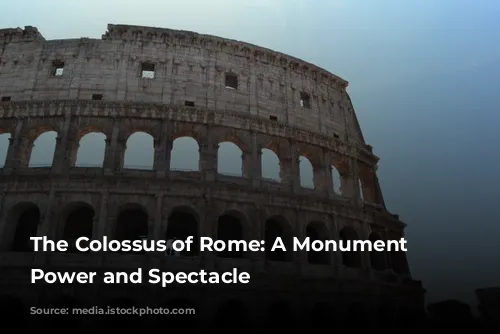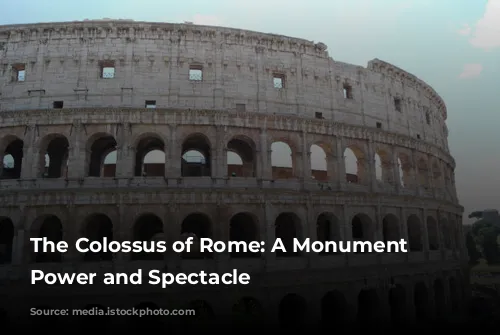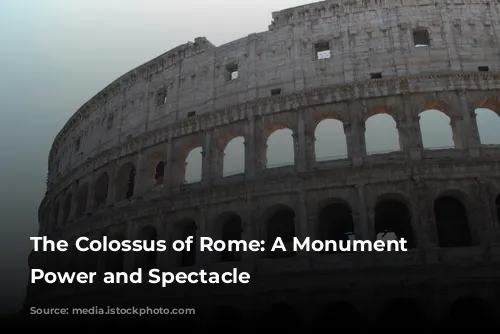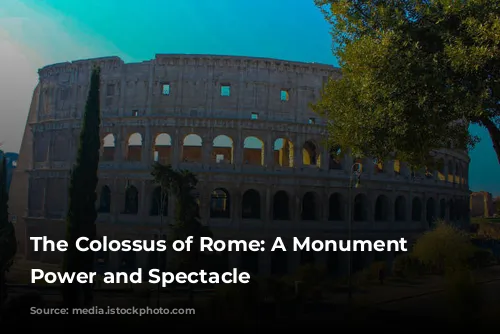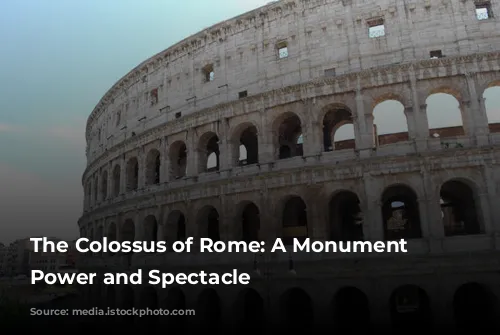The Colosseum, a name synonymous with ancient Rome, stands as a testament to the empire’s grandeur and the spectacle that captivated its citizens. This imposing amphitheatre, originally known as the Flavian Amphitheatre, was the largest and most impressive in the Roman world. Its construction, initiated by Emperor Vespasian of the Flavia family, was completed by his son Titus, who inaugurated the Colosseum in 80 A.D. with a lavish 100-day opening ceremony. The event was a spectacle of gladiatorial contests, animal hunts, and even staged sea battles, known as “naumachia.” These events were a thrilling glimpse into the lives of the Romans and a testament to their love for spectacle.
Why “Colosseum”?
The name “Colosseum” wasn’t always associated with this iconic structure. It first appeared in a famous prophecy by the Venerable Bede in the Middle Ages. Bede declared: “Rome will exist as long as the Colosseum does; when the Colosseum falls so will Rome; when Rome falls so will the world”. This prophecy hints at the connection between the Colosseum and the fate of Rome. The name may have derived from a massive statue of Emperor Nero, known as “the Colossus,” which stood near the amphitheatre. This statue, unfortunately, has been completely destroyed.
Architectural Marvel of the Ancient World
The Colosseum is an architectural masterpiece. It stands as a testament to the Roman’s remarkable mastery of engineering. Originally covered in splendid travertine stone, the Colosseum’s elliptical shape was designed to maximize the number of spectators. The structure boasts four levels, each with 80 arches, showcasing the Romans’ innovative use of the arch. The Romans were known for their expertise in this architectural technique, using it in aqueducts and other grand constructions. It’s an incredible feat of engineering, especially considering it was built in less than a decade.
The Colosseum’s Transformation through Time
Today, we see only the skeleton of this once-grand arena. Three-fifths of the outer surrounding brick wall are missing, a consequence of the Colosseum’s use as a quarry for building materials during the Middle Ages. Popes used the stones, lead, and iron from the Colosseum to construct Barberini Palace, Piazza Venezia, and even St. Peter’s Basilica.
These actions have left their mark on the Colosseum, evident in the holes in its columns – evidence of the Romans’ practice of using lead and iron nails in their construction. Despite these changes, the Colosseum remains an imposing structure, capable of holding up to 70,000 spectators.
Seating, Spectacle, and Social Hierarchy
The Colosseum’s design offered efficient protection from the sun, thanks to its ingenious “Velarium.” This enormous linen awning, controlled by a complex system of ropes, winches, and wooden poles, required the coordination of 100 sailors from the Imperial fleet to manipulate it.
The amphitheatre’s tiered seating was designed to offer unobstructed views to every spectator. Entry was free for all Roman citizens, but seating was strictly divided by social status, mirroring the social hierarchy of Roman society. The upper tiers were reserved for the common people, with separate sections for men and women. As one descended towards the arena, the social standing of the spectators increased. The front row was reserved for senators, vestals, priests, and, of course, the emperor.
The Colosseum’s Hidden Depths: A World of Spectacle
The Colosseum’s arena, once covered in a mixture of brick and wood, is now gone, revealing the cellars that housed the equipment used to prepare and execute the spectacles. Two underground floors housed lifts and hoists with counterweights, still visible today. These “special effects” were used to hoist animals and gladiators through trapdoors, creating dramatic appearances that captivated the audience.
This elaborate system also allowed the Romans to raise elaborate backdrops, creating the illusion of forests or other settings for the hunting events. The Colosseum was a stage for spectacle, where imagination and engineering combined to create awe-inspiring shows.
The Games of the Colosseum
The Colosseum’s spectacles weren’t just entertainment; they were symbolic of the relationship between the citizens and their leader, forging a bond through shared experiences. The games served as a distraction from the political and economic realities of Roman life.
The Colosseum hosted a variety of shows, each with its own allure. “Venationes” – fights between exotic animals or men and animals – were popular morning events. “Silvae,” with their reconstructed forests and animals, offered a different kind of spectacle. Even “splatter cinema”, a term we use today to describe violent films, has its origins in the Colosseum’s brutal entertainment.
Gladiators: The Stars of the Colosseum
The gladiators, who appeared towards midday, were the most popular attraction. They entered the arena, welcomed by a deafening roar and the sound of trumpets and drums, from an underground passageway connected to their barracks, the Ludus Magnus. Their fame and popularity rivaled that of today’s sports stars.
The gladiators, a mix of prisoners of war and impoverished individuals, fought for freedom, fame, and fortune. They were skilled fighters, each with their own specialized weapons and fighting styles. Retiarii, armed with nets, tridents, and knives, clashed with shielded warriors. The battles were filled with suspense, the audience’s cheers and gasps mirroring the action in the arena.
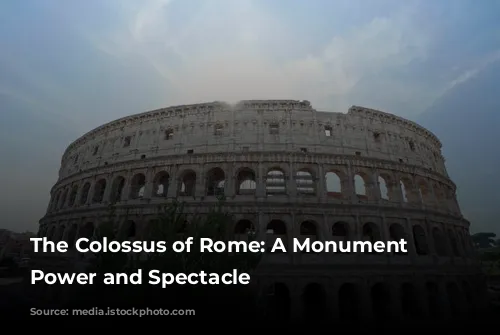
The Thrill of the Fight and the Power of the Emperor
The audience was enthralled by the gladiators’ displays of strength and skill. The fate of the defeated gladiator, however, rested in the hands of the emperor. If a gladiator was wounded, he could plead for mercy by raising his arm, and the audience would shout to the emperor. A thumbs-up meant life, a thumbs-down meant death.
The victor was rewarded with gold palm leaves and money and became a hero in the eyes of the people. The smell of blood was a constant presence in the arena, a reminder of the raw power and brutal reality of the games.
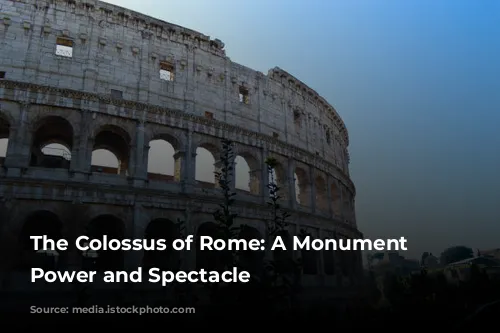
The Colosseum’s Legacy
The Colosseum’s influence extends beyond the realm of Roman history. It stands as a symbol of power, spectacle, and the enduring human fascination with both brutality and heroism. The Colosseum, though now a shadow of its former self, continues to inspire awe and wonder in visitors from around the world. Its ancient stones whisper stories of the past and remind us of the enduring legacy of the Roman Empire. Today, the Colosseum is not only a historical monument but also a symbol of the city of Rome, a reminder of the city’s glorious past and its enduring presence in the world.
